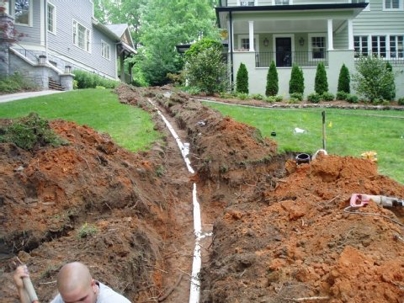Sewer line repair
The house sewer is the drainage piping between the building’s foundation and the sewer main or septic tank. Where swampy soil provides poor support for the pipe, cast iron must be used. Vitrified clay tiles are used where the soil is firm enough to provide support. Cast iron is considered superior in all cases except where acids in the soil or in waste material are likely to attack the metal.
Before water lines or sewer lines are covered, they must pass inspection by the plumbing inspector. After the sewer trench has been dug and the sewer main exposed, the most referred Fort Worth plumber can install the sewer. The following procedure is typical for a plumbing repair:
Plumbing Pro Tip of the Week
Tip #1 Attach supportive banding. This protects sewer pipes from damage during drilling.
Tip #2 Attach a rotary saw to the sewer main and cut an opening in the foundation wall with minimal damage to the wall.
Tip #3 Attach sleeve fitting over the hole and cement in place with concrete or special plastic materials. If additional reinforcement of the joint is desired, more concrete may be placed around it.
When the connection has hardened, the rest of the sewer line may be laid. Care must be taken to provide a proper slope of 1/4 inch per foot. Bell joints of vitrified clay pipe are sealed with special gaskets or with oakum and a special mixture of cement. A good seal is important so that tree roots do not enter and block the drain.

